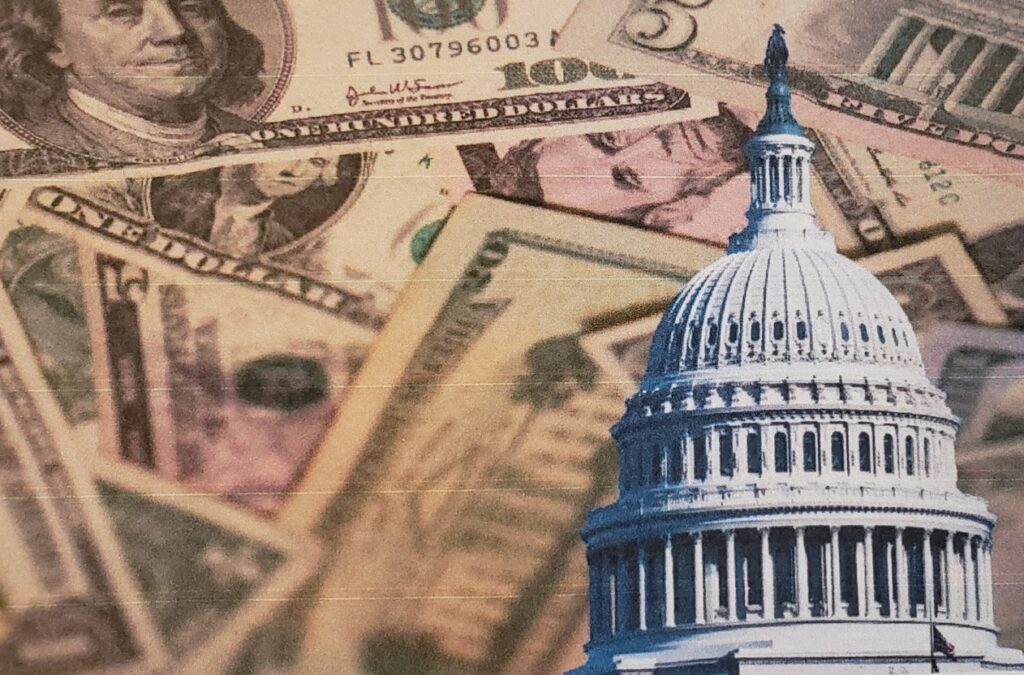
Washington is now consumed by the question of whether to raise the ceiling on the national debt. That ceiling currently stands at $31.38 trillion, barely above the $31.34 trillion of outstanding debt subject to the ceiling, according to the latest Daily Treasury Statement.
On its natural course, the debt would blast through the ceiling. The Treasury will begin implementing what it calls “extraordinary measures” that can fulfill commitments to bondholders and Social Security recipients until June while making other adjustments. That leaves Congress with roughly five months to avoid a fiscal collision jeopardizing payments on the national debt.
The so-called responsible faction in the impending debt debate says that the ceiling should be raised without any risk of default. The nation’s creditworthiness, they argue, shouldn’t be held hostage by conditions of fiscal discipline. The White House falls into this faction, insisting on a higher ceiling without any strings attached.
A group of about 20 House Republicans—many of whom originally opposed Kevin McCarthy’s speakership—announced their opposition to raising the ceiling without spending cuts. On Bloomberg TV on Wednesday, Representative Andy Ogles of Tennessee said he was “unwilling to give Biden a blank check.” His emerging faction is being called irresponsible and worse.
But who’s really irresponsible? This small group of Republicans who want to reintroduce fiscal discipline or the Biden administration and congressional Democrats, who have been borrowing and spending like drunken sailors for two years. Since President Biden’s inauguration alone, the national debt has soared by over $3.6 trillion.
Was this spending responsible after $4.4 trillion that had already been borrowed and spent between February 2020 and January 2021 as part of a necessary and sufficient response to the pandemic and the ensuing economic shutdown? Many economists warned that Mr. Biden’s first spending initiative, the $1.9 trillion American Rescue Plan, was unnecessary and would unleash inflation—and it clearly has.
It’s hardly irresponsible to suggest that we return to fiscal sanity. Indeed, any increase in the debt ceiling should be matched by an equal reduction in this slew of post-pandemic domestic spending.
Yet the Biden administration’s irresponsibility in its domestic spending isn’t the primary reason it should be reversed. The determinative reason is that federal-interest expense is rapidly rising to unaffordable levels, given the $8 trillion increase in debt since February 2020 and the high interest rates that the Federal Reserve has had to impose to rein in inflation.
In the first three months of this fiscal year, gross interest on the national debt hit $210 billion—or $144 in net interest, excluding interest on Treasury securities held in government trust accounts. That’s $840 billion gross and $576 billion net on an annualized basis, up dramatically from $580 billion gross and $383 billion net in the 12 months before the economic shutdown in March 2020. This escalation does not even reflect the full-year impact of the Fed’s 2022 interest-rate increases. The federal funds rate a year ago was near zero percent.
Rising interest expenses are reflected in worrying trends in the deficit. Though the deficit last fiscal year was $1.4 trillion, down from the pandemic-era deficits of $2.8 trillion in fiscal 2021 and $3.1 trillion in fiscal 2020, we’re heading in the wrong direction again. In the first federal fiscal quarter of this year, the deficit was $421 billion—or $1.7 trillion on an annualized basis.
The rising interest expense is itself a major contributor to the ongoing federal deficit and an underlying driver of the growing debt. It’s a self-perpetuating cycle: Uncle Sam borrows to pay interest, while incurring more interest expense on the new borrowing.
In addition to higher net interest, other items like entitlements continue to expand the deficit. Social Security expenses, for example, will rise roughly $100 billion over the next year to accommodate the 8.7% cost-of-living increase for high inflation which began this month.
Congress has long been aware of the impending budget crisis and could have adequately prepared for it. The small group of Republicans threatening to vote against any debt-ceiling increase has the right idea—that is, to force action now. The longer we wait to rein in debt, the harder it will be to escape a looming fiscal tailspin. The House GOP should unite around these legislators and adopt a simple dollar-for-dollar approach, offering Democrats one dollar of additional debt capacity for every dollar of domestic spending cuts today—not 10 years from now—leaving Democrats to designate what nonmilitary programs to cut. If people wonder why defense should be exempt, they need only consider Ukraine today and the possibility of Taiwan tomorrow.
There’s plenty of time before June. Democrats, who unleashed the irresponsible spending in the first place, should immediately begin negotiations within this framework. Should Democrats falter, the credit crisis will be on their hands.
![]()
Red Jahncke is a nationally recognized columnist, who writes about politics and policy. His columns appear in numerous national publications, such as The Wall Street Journal, Bloomberg, USA Today, The Hill, Issues & Insights and National Review as well as many Connecticut newspapers.



